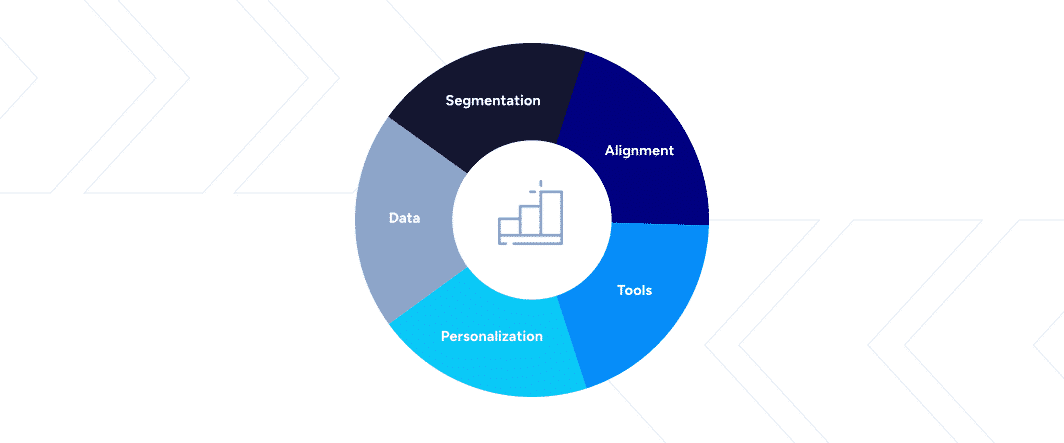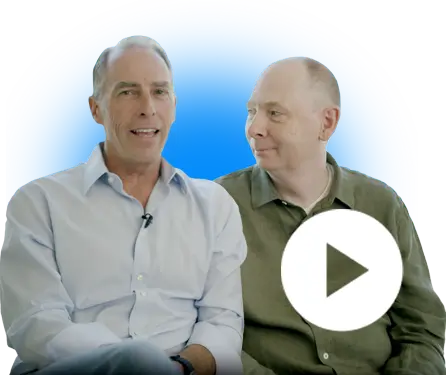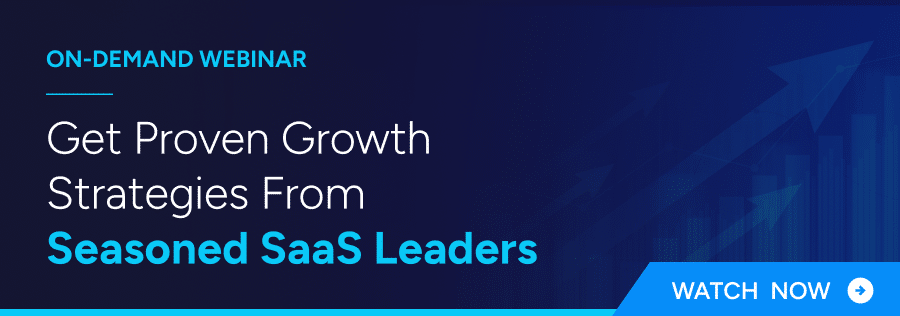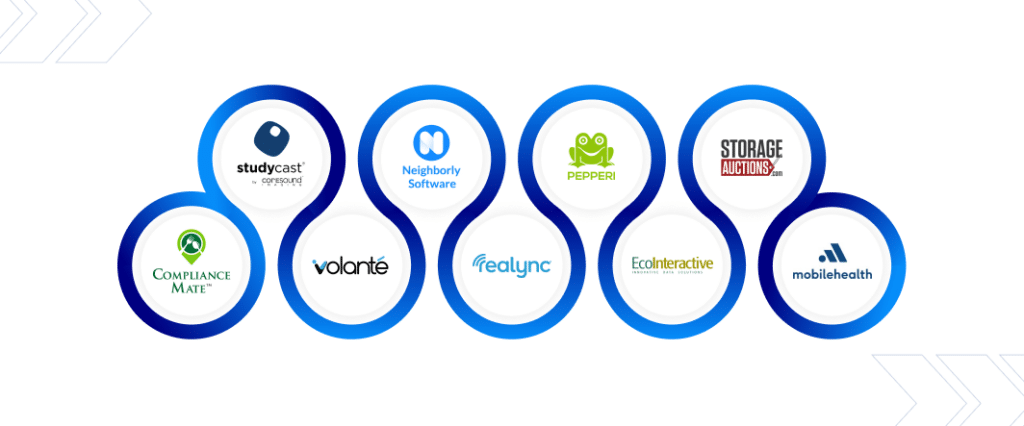SaaS GTM Strategy: 5 Priorities to Build a Durable Business

Today’s SaaS leaders and their teams are tasked with the crucial responsibility of creating sustainable avenues to drive growth. Growing revenue is challenging enough but doing it at scale and efficiently is an entirely different obstacle, and one that sales & marketing leaders face daily. No matter what stage your business is in, building a strong SaaS GTM strategy is likely a critical priority; 72% of organizations cite pipeline generation as their #1 priority, according to Gartner.
SaaS leaders usually understand this, but they are often less clear on how to create a strong GTM that, in turn, improves valuation. We often find that SaaS executives at early-stage and emerging SaaS companies struggle with sales & marketing more than any other area. It is sales & marketing, however, that have the most potential to improve the value of a business. Sales & marketing success doesn’t just grow top-line revenue; it scales gross margins more efficiently, boosts retention, and trickles down to bottom-line profitability, all of which positively impacts valuation.
We recently talked to three SaaS leaders who identified key areas that SaaS founders and operators can improve today to build more durable, valuable businesses. In this post, we will share their thoughts on:
- Best practices for creating and maintaining successful go-to-market strategies
- Common pitfalls when scaling sales & marketing operations and how to avoid them
- The impact of go-to-market success on company valuation
Best Practices for a Successful SaaS GTM Strategy
The key to GTM is adaptability, which means constantly monitoring your strategies to see what is and isn’t working. Doing this successfully means monitoring several different factors. In 2023, GTM teams should prioritize the following:
#1 Segment Customers
Our panel of SaaS leaders made one thing abundantly clear: your customers are a gold mine. Within your existing customers are your best marketing stories, the keys to understanding how to differentiate your offering and position it in a competitive marketplace, and the integral data needed to understand your ideal customer profile (ICP).
What is the best way to accomplish these critical items and learn about your customers on a deeper level? Segment and focus, and then rinse and repeat. Analyze your customers to determine your highest-value customers using retention, customer acquisition cost, expansion/upsell tendencies, etc. Slice and dice your customer base every which way you can, by demographics, geographies, psychographics, behaviors, needs, and economic values.
A thorough segmentation analysis should reveal which customers are your ICP from a go-to-market perspective (high value) and which are the most difficult and costly to obtain and support (low value). Now you can focus single-mindedly on finding ways to support and upsell your high-value customers and reduce churn rates by gradually shedding your low-value customers.
As Josh Schwartz, Operating Principal and Head of Sales Acceleration Practice at Growth Factors, puts it, GTM is “Really understanding your target market [so you can] develop messaging.” Andrea Pitts, Senior Vice President of PTC Velocity Global Sales, concurs: “It’s critical to align your stories with the personas of your target market. You should have different customer stories [for each] that will resonate with your focus markets.”
#2 Invest In GTM Tools
Don’t cheap out on customer-facing or internal analysis tools — investing in the right tools pays dividends. These digital tools can help companies scale by saving time and giving them access to huge amounts of information. This doesn’t just mean utilizing the right tools to prospect (though this is important). It also means investing in customer-facing tools and internal analysis tools. To the point above: you can’t segment your customer base if you don’t have the right tools to do so.
Panelists shared a few favorites: Josh cites sales engagement tools that give him reliable contact data, like Salesloft and Zoominfo. Andrea recommends business intelligence tools like ChurnZero and Maxio (previously SaaSOptics) that “put trending data at my fingertips.” And Kris Krisco, CEO of Buildout, suggests being aware of the impression your tools make on your clients, using “name brand” tools like Zoom and DocuSign rather than cheaper versions.
#3 Target Accounts & Personalize Experiences
GTM teams should implement account-based marketing (ABM) strategies to target specific accounts and create personalized experiences for high-value customers. Andrea suggests companies create personal relationships with “lighthouse accounts,” early adopters who provide critical feedback and share their experiences with other companies. “We really rely on our customers to sell us and sell our solutions,” she adds. “The business value that they drive is going to have a major impact.”
#4 Attain Sales and Marketing Alignment
Many early-stage SaaS businesses have a sales team that is tasked with wearing multiple hats: driving new logo acquisition, upselling existing customers, and managing account relationships to minimize churn. This is feasible in the short term, but our panel is adamant that it is difficult to sustain this structure while achieving scale.
Our experts agree that one simple way to set up your sales team for success is to split out hunters (salespeople focused on new logo acquisition) and farmers (account managers focused on current customer retention and expansions).
These roles require different types of people who possess different strengths. While having Swiss-army knife sales team members may work in the short term, our experts argue the best way to ensure your team is put into their best roles is to identify their strengths and then split out the team between hunters and farmers.
Once you have the right team members in place, then GTM teams should work on improving the alignment between sales & marketing to ensure better communication and collaboration, which leads to improved conversion rates and revenue growth.
“You want to make sure the entire go-to-market team is in sync,” warns Josh. “The last thing you need is an FDR one going outside of your ideal customer profile, spending a ton of time there and then distracting product.”
#5 Measure GTM Analytics
Your GTM strategy needs to be measurable, and that means using data analytics to track progress and gain insights into customer behavior and market trends. Josh, Kris, and Andrea all emphasize the importance of accessing and using data to make smarter decisions. Josh has “fallen in love with intent data,” which allows users to see exactly who is searching for a topic on the internet, making it easier to run targeted campaigns. A deep dive into data helped Andrea’s company better understand their ideal customer profile (ICP). “Then we were able to align the rest of the organization around that,” she explains, “segmenting our customers, changing our marketing strategies, and focusing our sales teams.”
What to Avoid When Building a SaaS GTM Strategy
Of course, companies make mistakes when trying to build out GTM operations, and some mistakes are more common than others. According to our panelists, these are the ones they see most often:
Forgetting About The Customer
According to Kris, one of the most common errors companies make as they get bigger is that they “forget how things feel from the customer perspective. You’ve shifted from a maniacal focus on customer experience, [and] what’s simple and makes sense to you may be much more cumbersome for your customer.” He suggests “putting some guardrails in place through the lens of customer standards and values.”
Over-reliance On Data
While everyone agrees that data is vital, both Andrea and Kris warn against relying so heavily on data that you can’t move forward — “Analysis paralysis,” as Andrea says. “Eighty percent is good enough. Let’s make decisions that get us to 80%.”
Kris quotes a colleague, “Never let a lack of data overrule your intuition,” adding, “Use the data if you can, but if you don’t have it, make a decision anyway.”
Selling To The Wrong Customers
Selling to the wrong customers has a negative impact on all areas of business, from implementation to customer support, product development, and retention. When Andrea’s company researched its segmentation, “We instantly recognized which portion of our base was bad for our business. Retention rates were in the 60s and 70s when our goal was to get to over 90.”
Over the next year, the company weeded out undesirable customers by setting a minimum ARR. “It was tough,” says Andrea — but the results were worth it when they achieved their four-year goal of gross retention rate in just over one year.
Failing To Focus
Andrea says “not making the decision to focus” is one of the most common problems she sees. Josh concurs: not identifying your ideal customer profile or nailing your niche will make things much harder in the long run, especially as you grow. “It’s easy to stray away as you grow and add more products,” he says, “but you always need to lay the foundation with ideal customer profiles, nail the niche, and select the right accounts.”
Not Prioritizing A Great Sales Team
“Don’t go cheap on sales hires!” warns Andrea. “You need to have those grounded core sales folks that you can trust. If you put your solution in their hands, they will sell the heck out of it.” She notes that this can be a challenge when leaders from non-sales backgrounds see the cost of hiring an excellent team, “But you’ve got to,” she says. “You’ve got to overcome that and get some good people in those seats.”
How a SaaS GTM Strategy Impacts Valuation
A successful SaaS GTM strategy can impact your valuation by improving EBITDA, helping you scale, and driving strong retention metrics.
At SEG, we know that retention, particularly gross retention, is heavily weighted by buyers and investors in valuing SaaS businesses. However, founders don’t always understand that strong retention is a result of an effective sales & marketing strategy that focuses efforts on the right customers. Andrea recalls her experience improving retention, stating,
“When we did segment the customer base, at that point, it was instantly recognized which portion of the base was bad for our business… really bad. The results were pretty extreme. In the first year of our PE experience, we met our four-year gross retention goal [which was] to get to 91%.”
When asked how efficiently scaling sales & marketing benefits a company beyond simply growing revenue, Josh replies, “If you have the right retention and good EBITDA, that makes you a lot more attractive for M&A.” He continues, “A good go-to-market has really good growth rates. When you can scale right, you don’t need to hire those extra heads for customer support or customer service to do more.”
Kris relies on the Rule of 40 as an indication of a healthy and growing company, with an emphasis on profitable growth. “It’s especially hard for the early-stage folks right now because, of course, you don’t have EBITDA.” This makes efficiency more important than ever. “When you’re explicitly clear on what to spend,” Kris says, “then that makes everything throughout the rest of the company really efficient because then they know what to spend time and energy on.”
Kris adds that your SaaS GTM strategy also serve as proof of your potential. “When bringing on a minority partner or [considering] an exit, success will depend on their belief in where you’re going to go. You need to be able to demonstrate that you can expand, that you’ve experimented.”
Finally, he emphasizes the importance of working with an advisor. “Regardless of how smart you think you are, I highly suggest getting an experienced banker to work with your team.”
Conclusion
Go-to-market strategies are your opportunity to drive measurable growth by aligning all areas of your business. GTM means tweaking, refining, and reiterating, especially as you grow, but the outcomes—better retention, higher revenue, strong growth, and potentially higher valuation—are well worth the effort.
Despite the rough economy, Kris, Josh, and Andrea are optimistic. “There are so many great things happening in go-to-market, in particular marketing and different ways to reach your customers,” says Andrea. Kris adds that GTM must be ingrained throughout the organization and reminds us that “Culture eats strategy for breakfast. Go-to-market can’t be just a strategy,” he says. “It has to be in the team’s blood. That’s the challenge of your go-to-market leaders.”
For more unique insights from Andrea, Josh, and Kris, you can access the full webinar here.










